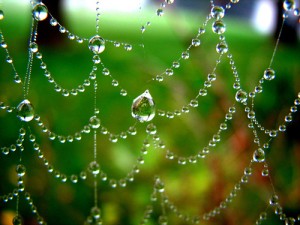You told me so!
Personal networking was the #1 topic of interest in our Parent Survey.
How wise you are!
It takes intentional effort to broaden and deepen personal networks. But the relationships that grow from them can enrich your life - and your child’s life - beyond all expectations.
Opportunities for employment, community service, recreation, self determination, wellness, and overall quality of life expand when our circle includes more than immediate family and paid service providers.
What do vibrant personal networks look like?
Clearly each person is unique. So is each personal network.
Personality, age, skills, interests, support needs, location, and all sorts of other variables influence how someone grows and participates in a personal network.
Still, it helps to see how others go about networking successfully - so we can chose how we will go about it ourselves.
Here’s a post in which I’ve assembled a diverse collection of videos, stories and articles showing how people have intentionally developed networks. There’s much more here than can be absorbed in one sitting. You’ll hear a wide variety of voices that will take some time to consider.
You’ll see some families working with a facilitator or using a particular program model. Other families simply begin informally to develop connections and relationships - one at a time - without using a particular “model”.
What approach feels most comfortable to you?
Mutuality
There is an element to networking that’s important to emphasize. Mutuality.
All of us have paid relationships (with doctors, car mechanics, repair technicians, etc.) - in which we exchange money for services.
We also have relationships with friends, colleagues, neighbors, and acquaintances - in which the reciprocity is less tangible. Still - there is an element of give and take - a mutuality. We don’t measure it formally - but we have a sense that both of us contribute who we are to the relationship in a way that’s valued by the other.
Frankly, as parents, we do not always see clearly the depth and breadth of what our kids can bring to relationships. No matter how significant their disabilities may be. This is natural - because we view our kids from a parental point of view. However, our kids have passions, interests and gifts that, if given the opportunity, in the right context, can and will be highly valued by others. This can lead to genuine, mutual relationships - rather than just service provider arrangements.
There is an element of risk in mutual (non-paid) relationships. Each person is free to continue or end the relationship at any time. Honest communication and attention to the needs of the other is very important. And a varied network of relationships, avoiding dependence on just one person, is also essential.
What does your child’s network look like now?
It may be helpful for you and your child to use a graphic organizer to get a sense of the current relationship landscape.
Judith Snow, a brilliant woman with significant physical disabilities, designed a way of looking at relationship networks called circles of support. In fact, using this concept, she was able to intentionally develop informal relationships that supplemented paid personal assistance staff, so that she was able to live in her own home rather than a nursing facility.
Graphic organizers help us see relationships more clearly.
Here and here you will find two pdf documents that show the circles of support graphic organizer and describe ways to use it to move forward with networking.
Even if you don’t choose to start a circles of support “group” - using the graphic organizers can help you and your child see which of the circles need some intentional nurturing.
A word about the circles of support model. Even though your child (“the focus person”) is in the middle of the circles, the relationships are mutual. To get a sense of this - map out your own relationships in each of the 4 concentric circles as shown in the linked documents. Ask yourself, are you the only focus of these relationships - or do you contribute mutually to each of them in some way.
Clearly, networking isn’t just about what we “get”, but also how we contribute.
Expanding the tool shop
Today I’m opening up a new section of our Free Transition Tools Shop - specifically for growing personal networks.
We’ll add to it over time.
Let’s have some real dialogue in the comments of this and future posts. The idea is to learn from one another. So that we, too, can be a network - right?
Have you used a circle of support graphic organizer - or any of the strategies mentioned in the original Circles of Friendship and Support post?
What networking strategies have been helpful for you and your child? What questions, frustrations, or suggestions can you share? Hope to hear from you in the comments!
Did you find this post and its links helpful? Please pass it on! Thanks.
Photo credit: Audreyjm529 at flickr




{ 2 comments… read them below or add one }
Mary,
I love how you weave personal responsibility and intention into this post. You have given parents tools and exercises to try out for themselves. With this experience, parents can share so much more with their young adult(s). You are so appreciated.
Doreen
Doreen,
Your encouragement means a great deal to me. Thank you! I so appreciate your positive collaborative spirit. It is such a joy to know you. Thanks for all you graciously offer families at IEP for Mom - and thanks for being you!